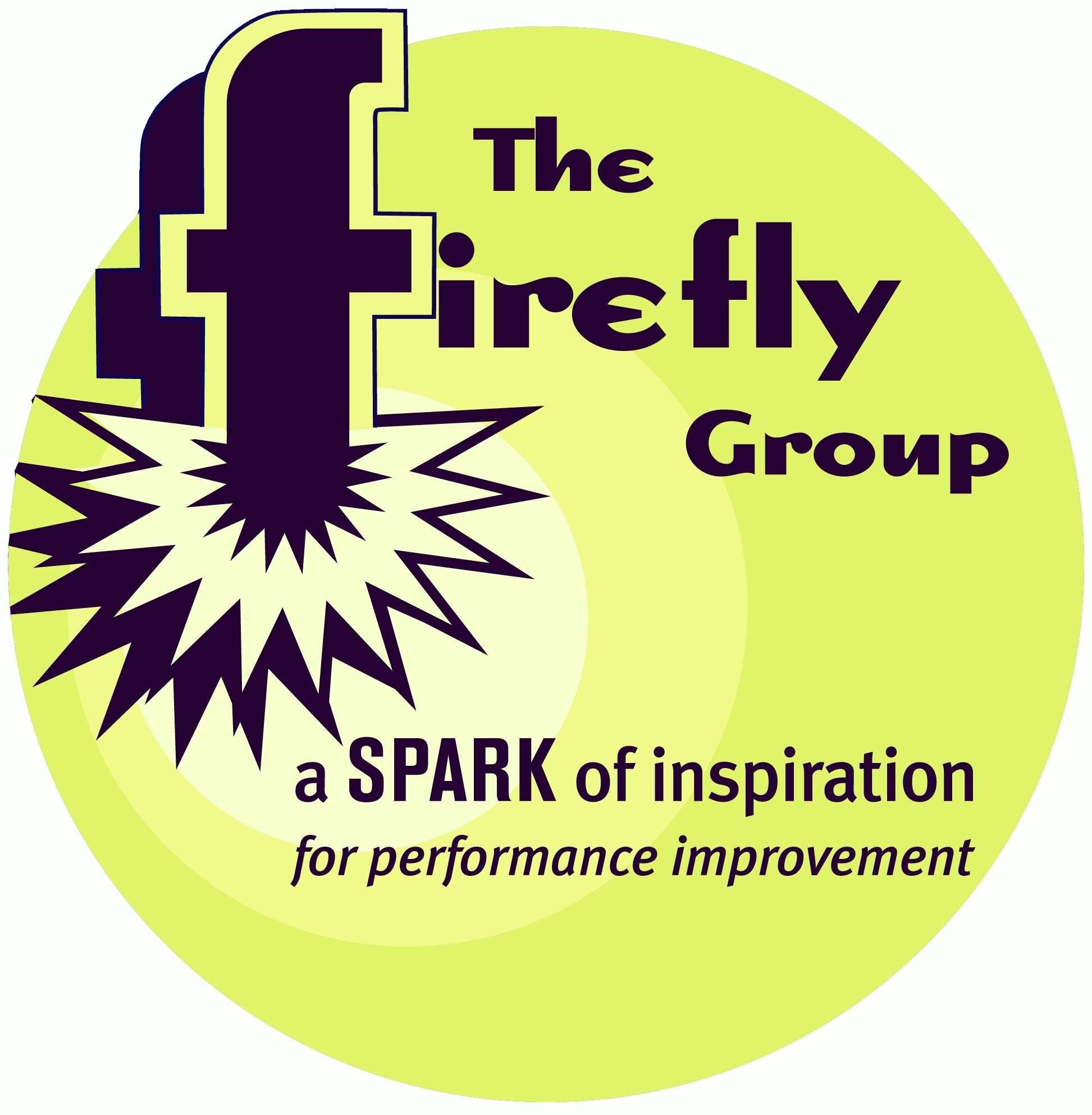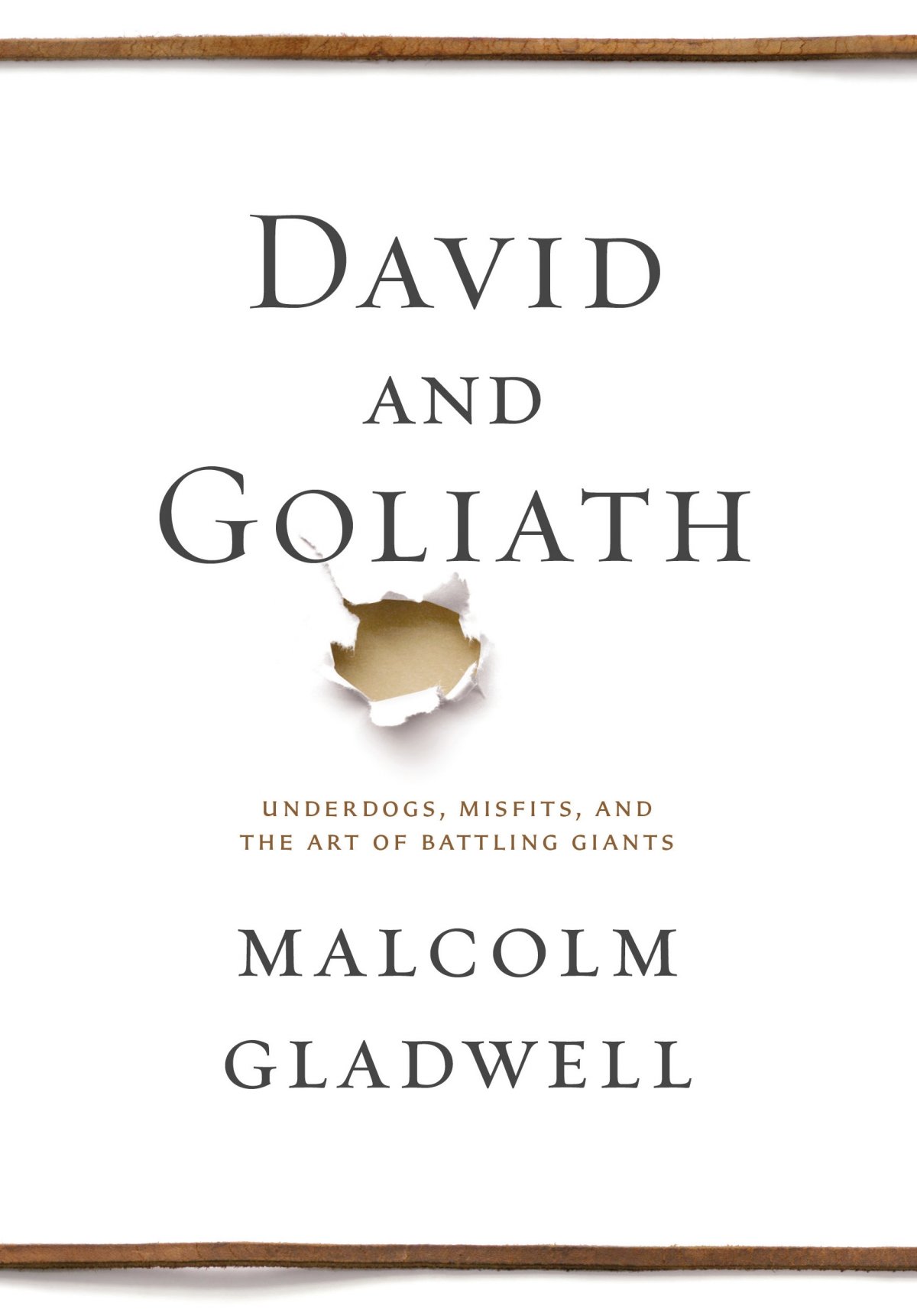

The Firefly Group helps people use everyday situations for learning and connecting to the Big Picture. After working with Firefly, you will be energized with specific action steps to achieve your goals.
We do this through training of trainers, leadership development, performance improvement training, strategic planning, writing training manuals, and clarification of organizational mission and vision. Our methods are engaging, thought-filled, and results-oriented.
 If
this sounds like a good direction for your organization, let's talk about
how we might collaborate! Please give me a call (802.257.7247) or send an
. - Brian
If
this sounds like a good direction for your organization, let's talk about
how we might collaborate! Please give me a call (802.257.7247) or send an
. - Brian
 Your ETR (Estimated Time to Read): 10 minutes Your ETII (Estimated Time to Implement Ideas): 5 weeks |
January 2014
|
Say
It Quick |
Discoveries bits of serendipity to inspire and motivate |
Ideas fuel for your own continuous learning |
Activities tips and tricks you can try today |
| Drum Roll, Please | David and Goliath | The Underdonkey |
Why might you put your money on the underdog? Because often the underdog is more powerful than you think. Find out why beginning with this 99-Word Story.
Drum Roll, Please
Under the big top it was the tightrope walker's most spectacular stunt: a double back flip to land on the rope. Add to the suspense that this was not the typical jaded road show. This was Circus Smirkus, a troop of teenagers with all the talent of an adult professional team.Two attempts ended with legs and wire entangled. But by the third try he landed on his feet and the crowd erupted in applause - louder than if he'd succeeded the first time!
Challenge yourself, make an honest effort, and people will want you to succeed.
 David
and Goliath
David
and Goliath
Cheer for the underdog!
There's probably a time when each of us has hoped the little guy, the one most disadvantaged, would come out on top. It's not surprising, therefore, that Malcom Gladwell has chosen the timeless story of David and Goliath as the title and backdrop for his latest book.
In David and Goliath, Gladwell explores the advantages and disadvantages of having power and invites us to reconsider our assumptions about the qualities that enable people to be successful. In his signature writing style, Gladwell interweaves examples such as a basketball team of 13-year-old girls, a successful business leader who has dyslexia, Catholic baby stroller-pushing mothers who overwhelmed Protestant police in Northern Ireland, the diminishing returns of small class size in public schools, the Civil Rights movement, and the early Impressionist painters to illustrate how having power is not always what it's cracked up to be.
Gladwell also makes clear that what appear to be weaknesses of an underdog can actually become strengths.
The author uses the Biblical story of David and Goliath to highlight the differences between perceived and actual strengths and weaknesses. In the story, David, a young shepherd boy, takes on the challenge of the giant Goliath, a seasoned soldier, in a battle between the Israelites and the Philistines. Everyone assumes David doesn't stand a chance against Goliath with his armor and physical strength. But David surprises everyone, and most of all Goliath, with speed and agility. He flings a stone with his slingshot and Goliath drops dead. Gladwell makes the case that Goliath never had a chance. A slingshot is a deadly weapon which can be used with accuracy at a distance. In his heavy armor, Goliath could only stand and wait for David to come into the range of his own club and sword.
Using modern-day examples, Gladwell divides his book into three section to describe the "Advantages of Disadvantages (and the Disadvantages of Advantages)," the "Theory of Desirable Difficulty," and the "Limits of Power." Some examples:
Perhaps we like to cheer for the underdog because we have been that disadvantaged individual ourselves. Or, as in the 99-Word Story, we've faced difficult odds and, with skill and great effort, realized that we had more advantages than we thought. Gladwell's insights teach us that being in a weaker position may not be that bad if we challenge our conventional notions that having more (strength, size, speed, wealth, health, intelligence, etc.) is not always an advantage.
David and Goliath by Malcom Gladwell, Little Brown and Company, 2013, ISBN: 978-0-316-20436-1
The Advantages within Disadvantages
"We have, I think, a very rigid and limited definition of what an advantage is." This simple statement fuels much of Malcom Gladwell's David and Goliath. It underlies Gladwell's explanation of the diminishing returns on increases in power and frames the conversation about how apparent deficits can be advantages.
Our concept of what is an advantage - or a disadvantage - is also key to how we structure our society and its institutions. John McKnight, a professor at Northwestern University and founder of the Asset-Based Community Development Institute, has been studying community, what makes it, how it grows, and why we often feel it has been lost. He notes that a big swath of society is organized to fix people and their problems. There are hospitals, therapists, and social service agencies of all sorts available to help people in need; people who have a problem, people who are disadvantaged in some way.
These institutions, McKnight explains, have a role in our community but they also miss something important. They see each of us as a glass half empty. They see our faults, problems, and deficits but miss our potentialities. Institutions end up defining people by their shortcomings. A self-fulfilling prophecy emerges when we also begin defining others, and naming ourselves, by our imperfections. We judge others by what they cannot do and we criticize ourselves for the ways we fail to measure up.
We define a large section of the population as underdogs simply because they don't match a narrow definition of positive characteristics.
Through his research, McKnight noticed that the community organizers who were most successful were those who focused on the gifts and assets that people had. It was those positive characteristics that would ultimately contribute to building a community. These organizers were less concerned about people's deficits and more concerned about their abilities, interests, and the passions that drove them to take action on the issues they cared about. McKnight says that we can make more lasting social change and build stronger communities when we accept the part of each person that is half full; when we accept people for who they are and for the gifts they bring to the situations they are in.
I once heard about a man who used to have a big problem. He couldn't keep a job. He was rejected from social situations. His problem was swearing. He couldn't, or wouldn't, stop peppering his language with four letter invectives that people simply could not abide. Imagine how his speech habits must have clashed with the yellow smiley-face culture of WalMart, one of his many employers. Yet no amount of logic, pleading, teaching, bribing, or threatening would make him change.
Finally, someone gave up trying to fix him. That person said, "Maybe we should change the situation. Maybe he's spending time with the wrong kind of people." So that person took him down to the harbor and helped him get a job with some fishermen. There he worked with a whole boatload of people who didn't care how he talked. In fact, he made friends right away because he was able to teach them a phrase or two of the four-letter kind.
As it turns out, community is created when we contribute our gifts - not when we fix all the imperfect people. Each of us is important and each of us has a gift to give that will make the community a better place. From this perspective, everyone must find a way to contribute their gift and a person who is disadvantaged is just as likely and has just as much potential to make a positive contribution to the community as anyone else.
Because of our conditioning, it's not always easy to see how someone's limitations might actually become assets. If you would like more insight about this concept, consider the activity that follows.
The Underdonkey
How is it possible that a person's limitations and disadvantages can also become their strongest assets? The concept is counterintuitive, yet it is not that uncommon. Examples exist in both real life and fiction. In this activity, scenes from a popular animated film are used to illustrate the strength of the underdog.
Materials:
DVD of Shrek directed by Vicky Jenson and Andrew Adamson, 2001, http://www.shrek.com/
DVD playback equipmentParticipants:
Any numberProcedure:
Acknowledge that it's often difficult to see how someone with a lot of disadvantages, someone who's an underdog, can come out on top. Explain that you would like to introduce participants to just such an individual who is a character in the movie Shrek.Ask people to watch a segment of the movie and pay special attention to the character "Donkey" played by Eddie Murphy. In this scene, Donkey says he doesn't have any friends. As they watch, have people make a list of all the reasons they think Donkey doesn't have friends.
Play the scene "Talking Flying Donkey" In which we are introduced to Donkey as he tries to escape capture by the authorities who are rounding up all the magical creatures in the forest. He meets Shrek, a giant green ogre, who wants to be left alone.
Ask participants to make a collective list of the negative attributes that prevent Donkey from having the friends he wants. List them large so all can see. The list will include characteristics like constantly talking, sharing too much personal information, excessive flattery, saying the first thing that pops into his head, not having a social filter, being inconsiderate, being needy, being stubborn, etc.
Next explain that Shrek and Donkey find themselves on a quest to save a princess from a dragon's lair. At one point, Donkey is cornered by the Dragon but, instead of being eaten, Donkey somehow survives. Ask participants to watch the next scene and make a list of all the skills that Donkey has which enable him to avoid being eaten by Dragon.
Show the scene "Dragon's Keep." Make a group list of Donkey's positive characteristics and skills. Examples will likely include being a charmer, thinking quickly, not giving up, being a good improviser, and taking advantage of a situation.
Now ask people to compare the two lists about Donkey's skills side by side. What similarities and differences do people notice? Most groups will note the similarities between the negative and positive traits of Donkey. Excessive flattery is like being a charmer. Saying the first thing that pops into your head is like thinking quickly. Being stubborn is like not giving up.
Discussion:
- How do you explain the fact that so many of Donkey's qualities are listed as being both negative and positive?
- What are the factors that determine whether a personal quality is seen as a need/deficit or an asset/gift? (context, culture, people who are present, our own attitudes, perceptions, judgments, length of time with the person, mental models)
- What other examples can you think of that are similar to Donkey?
- What are some strategies for telling others about the gifts that we see in them?
- What is the effect when we learn of one of our own gifts? How might it affect our self-esteem and our ability to act when we feel like the underdog?
In fact, Donkey is totally consistent in his actions in both scenes. His success or failure in either instance is a result of two factors: the person and the situation. In the first scene, Shrek is the wrong person for Donkey's tactics. Shrek doesn't want or need friends. However, in a different situation, a hated and embittered Dragon is the right person to be charmed by Donkey's smooth talk and flattering ways.
Given the right person and context, an underdog - or, in this case, an underdonkey - can prevail.
|
Whether you need a keynote speaker, or help with strategic planning, performance improvement, or training facilitators and trainers in your organization, I look forward to your call (802.257.7247) or . -- Brian |
Read previous
issues. Click Library!
To add or delete your name to our mailing list, email
with a short note in the subject line.
I want this newsletter to be practical, succinct, and thoughtful. If you have suggestions about how I can meet these criteria, please let me know! Send me an with your thoughts and ideas.
Home
| Services
| Products
| Mission
| Ideas |
The Group
| The Buzz
(c)
2013 The Firefly Group